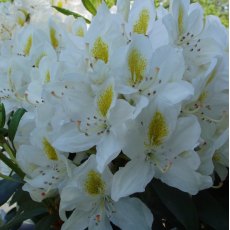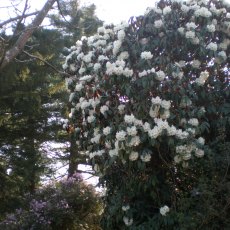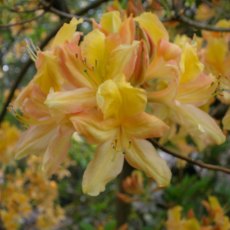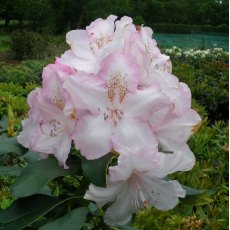Rhododendron Fabia (FCC form) AGM
Item: HFAB
 In stock
In stock
May
Orange
125-150cm
Not Scented
No
To -15 °C
Collect in Store
This item is available for collection.
Home Delivery
UK mainland delivery from £8.95
This is one of our favourite orange plants. It has deep orange bell-shaped flowers in loose trusses during May. A compact growing plant, which is best in a light shadey position. The underside of the leaves have a fawn suede-like indumentum underneath. Height 120-140cm in 10 years.
- Recommended for: pretty flowers and great foliage.
- Plantsman range.
- Ideal position: Dappled shade.
- Habit: Open.
- Group: Hybrid Rhododendron
- Parentage: dichroanthum (s) X griersonianum.
- Hybridization date: pre 1950 (1927).
- Bred by: Lord Aberconway. Origin: British.
- Ideal soil: pH 4.5 to 6.
- RHS Hardiness Rating: H5.
- How we usually propagate this plant: Cutting.
- Awards: RHS Award of Garden Merit.
Customer Reviews



Good to know
Our best-selling Rhododendrons, ideal for hedges, screening and large displays, growing to 125-200cm in 10 years.
Most of these plants can be described as ‘Hardy Hybrids’, the tough dense plants which are ideal for hedging and screening, or for planting within a border. Some can even be described as ‘Ironclads’ – tough plants that will withstand temperatures of below -20°C, and the coldest European winter. With care, it is possible to select varieties which flower from January until June, with flower trusses in a wide range of colours. With their dense downward pointing leaves, recent research has shown that they reflect sound waves and create some of the best natural sound barriers. They will take sun or shade, but dappled is best. Most hardy hybrids will bud up and flower as a 5 or 7.5 litre plant.
Also in this section are more tender varieties with delicate bell-shaped flowers that hang in small clusters, and sparser foliage. These are better suited to the more sheltered woodland garden, where they can add great character without creating dense plantings. Some woodland types have a more upright and open tree-like habit, so are not suited for screening purposes, but make great focal plants in the garden. Yellow and orange flowering varieties are always slower growing and more fussy, requiring excellent drainage. You won’t find these special plants in a garden centre, and they may take a year or so longer before they start flowering, but they will grow into choice long term plants.
Those flowering from December to March often flower erratically through the winter, with blooms opening in succession. This means that at least some blooms will avoid the frosts, and give some welcome flower to brighten up a winter’s day. Trees with overhead canopy can give a few degrees of frost protection to the flowers. Late flowering varieties also benefit from tree canopy to provide shade during the summer months when the sun is that much stronger.
Rhododendrons like moist acidic soil, with good drainage, and plenty of organic matter such as leaf-mould and added ericaceous compost. Plant no deeper than the top of the rootball, and dig in plenty of good ericaceous compost around the sides. For a guide to plant spacing, use the height we give in 10 years as a guide to the distance between each plant. Spacing can be closer when planting a hedge, or if you are impatient. For planning a border, spacing should be one plant per 3-4m². Give a teaspoon of slow-release feed at the 5 litre size, rising to a handful full for mature plants. Tall hybrid rhododendrons are not typically damaged by deer or rabbits. They are not recommended for container growing, which they would outgrow in a few years.
Please note: Some varieties are wider than their height. Specimen size plants (eg 80-90cm) will be measured by their largest measurement which could be the spread of the plant.
For further advice, For further advice, see here
Size Guide
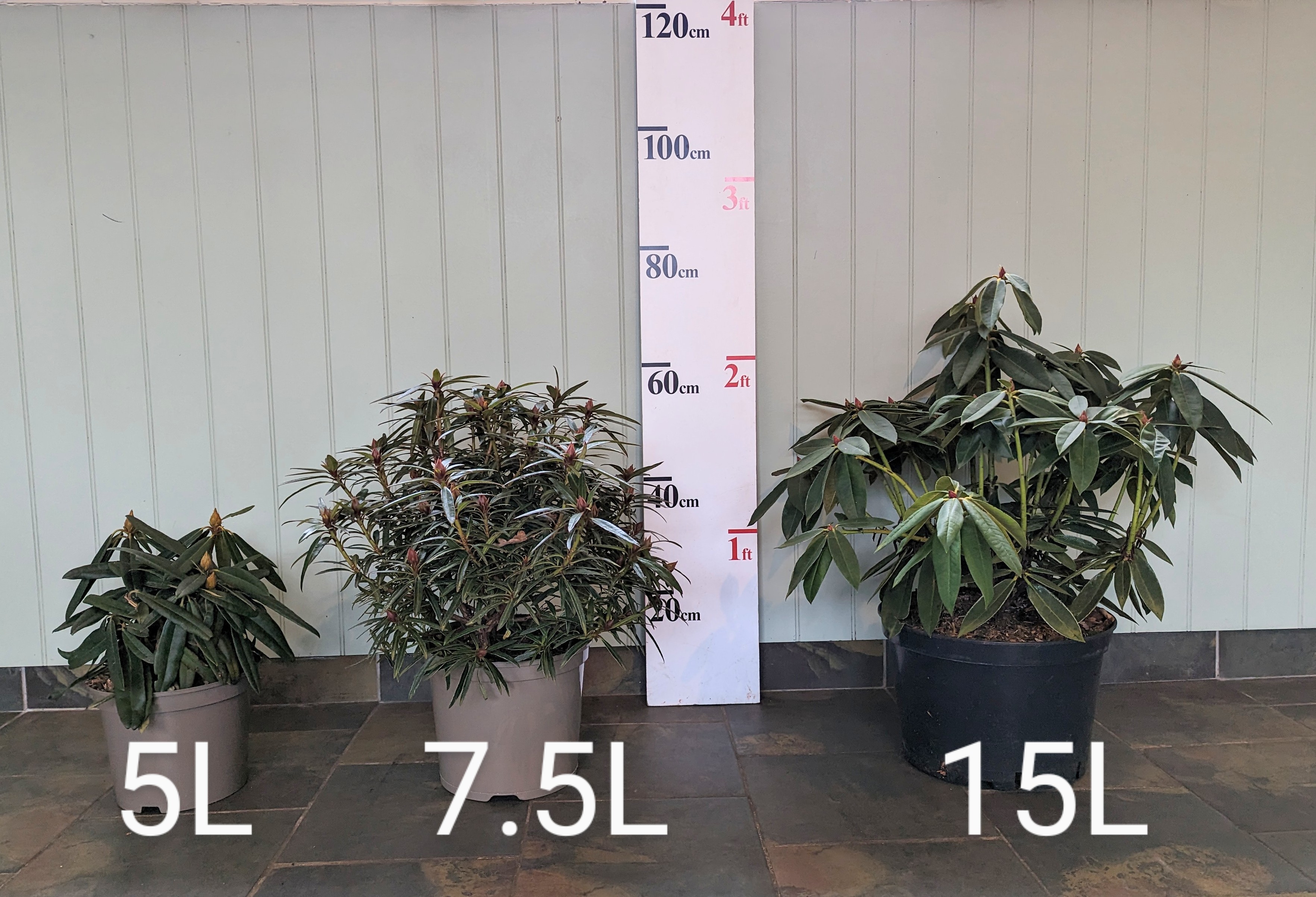
The Basics
Ideal soil
Acidic soil, good organic content, pH 4.5-6.0. Inkarho range of rhododendrons will tolerate soils up to pH7.5
Sun or Shade
Light dappled shade is best for most varieties.
Shelter
Refer to hardiness rating. Give young plants protection.
Site Selection
Avoid close to trees, roots, invasive weeds, walls, hot patios, dry banks and waterlogged soils. Do not use weed matting or stone mulch.
Plant spacing
Use the height shown in 10 years as a guide to the distance between each plant. Allow room for plant to fill out. If planting closer for instant impact, be prepared to move plants after a few years.
Compost
- 3 litre pot, dig in 10-20 litres of ericaceous compost.
- 7.5 litre pot, dig in 20-30 litres of ericaceous compost.
- 70-80cm specimen, dig in 60 litres of ericaceous compost.
- 100-120cm specimen, dig in 120 litres of ericaceous compost.
Planting depth
Plant high in the ground, with the top of the rootball visible.
Feeding
Slow-release ericaceous feed recommended in March and straight after flowering.
Mulch
Recommended every few years.
Water
The key ingredient! Keep moist all season, especially the critical time at end of June for flower bud initiation. Tap water is better than no water. Heavy dose at least once per week in dry weather.
Drainage
Ensure good drainage in winter, especially with yellow flowering varieties. Avoid waterlogged sites.
Pruning
Rhododendrons and Camellias: Not normally required. Tidy wayward shoots after flowering.
Evergreen azaleas and Bloombux can be clipped into a low hedge.
Magnolias and Acers: Formative pruning when young to shape into a tree or bush.
Deadheading
Remove old flower-heads, particularly on young or weak plants.
For further advice see here
Delivery & Returns
Our website calculates the delivery charge according to weight and delivery location throughout the UK. To see these charges, please enter your postcode at the checkout, and you will see the charge vary as you add more items to your wheelbarrow.
 Millais Nurseries
Millais Nurseries




